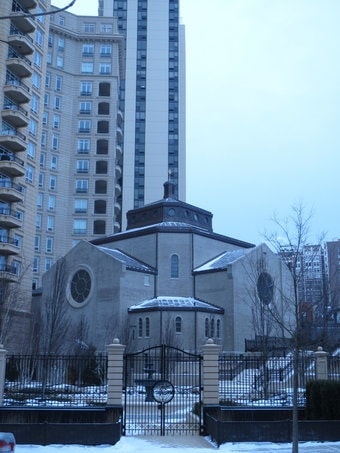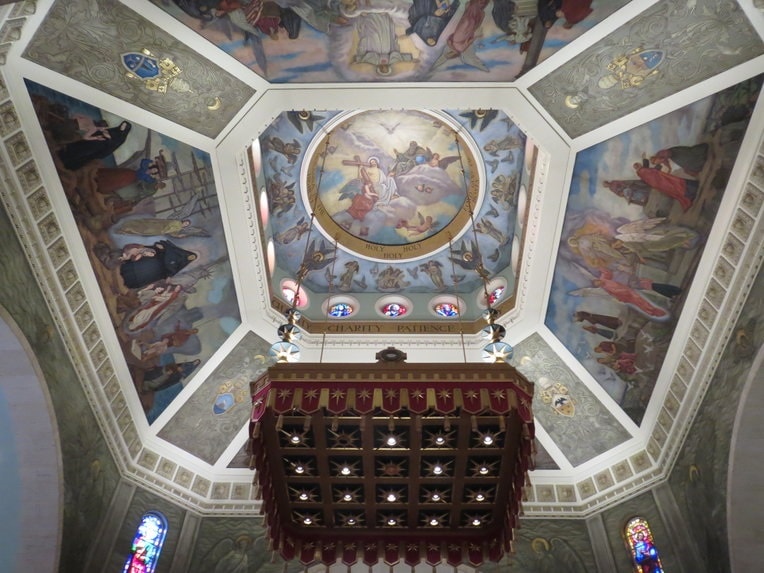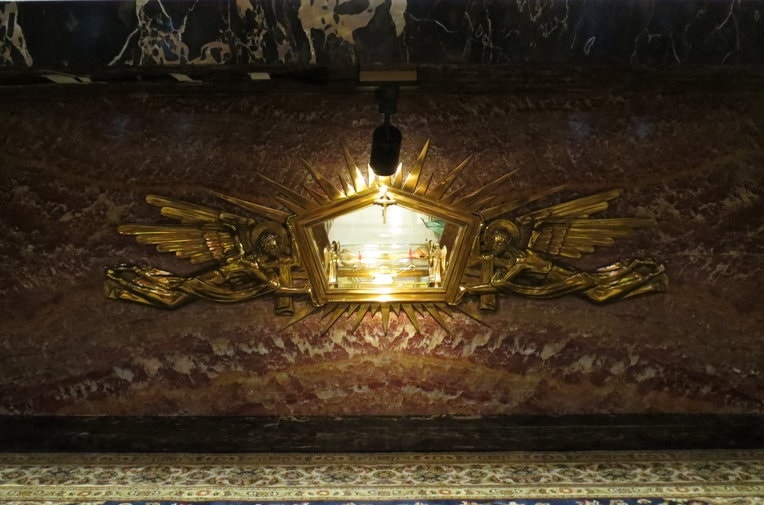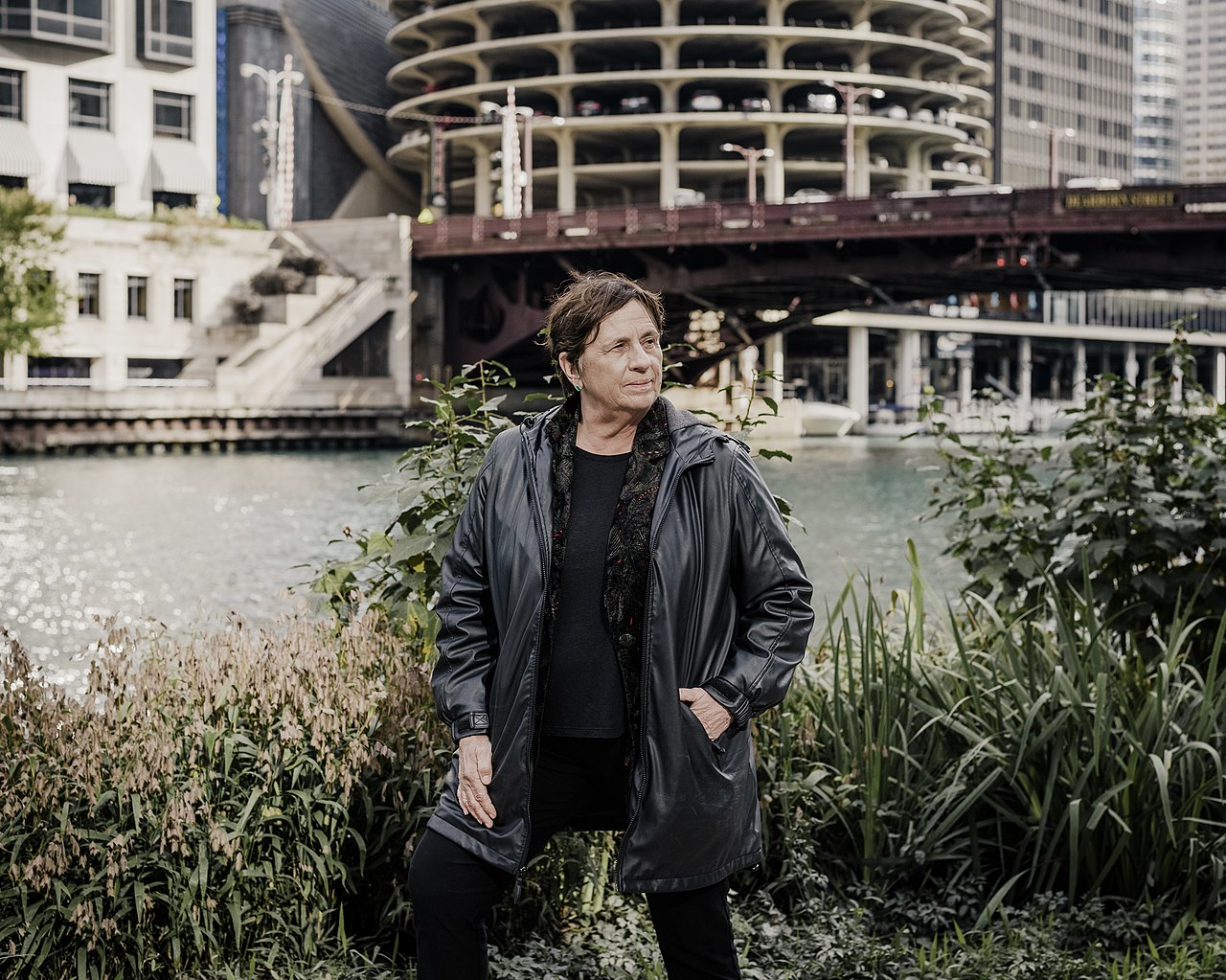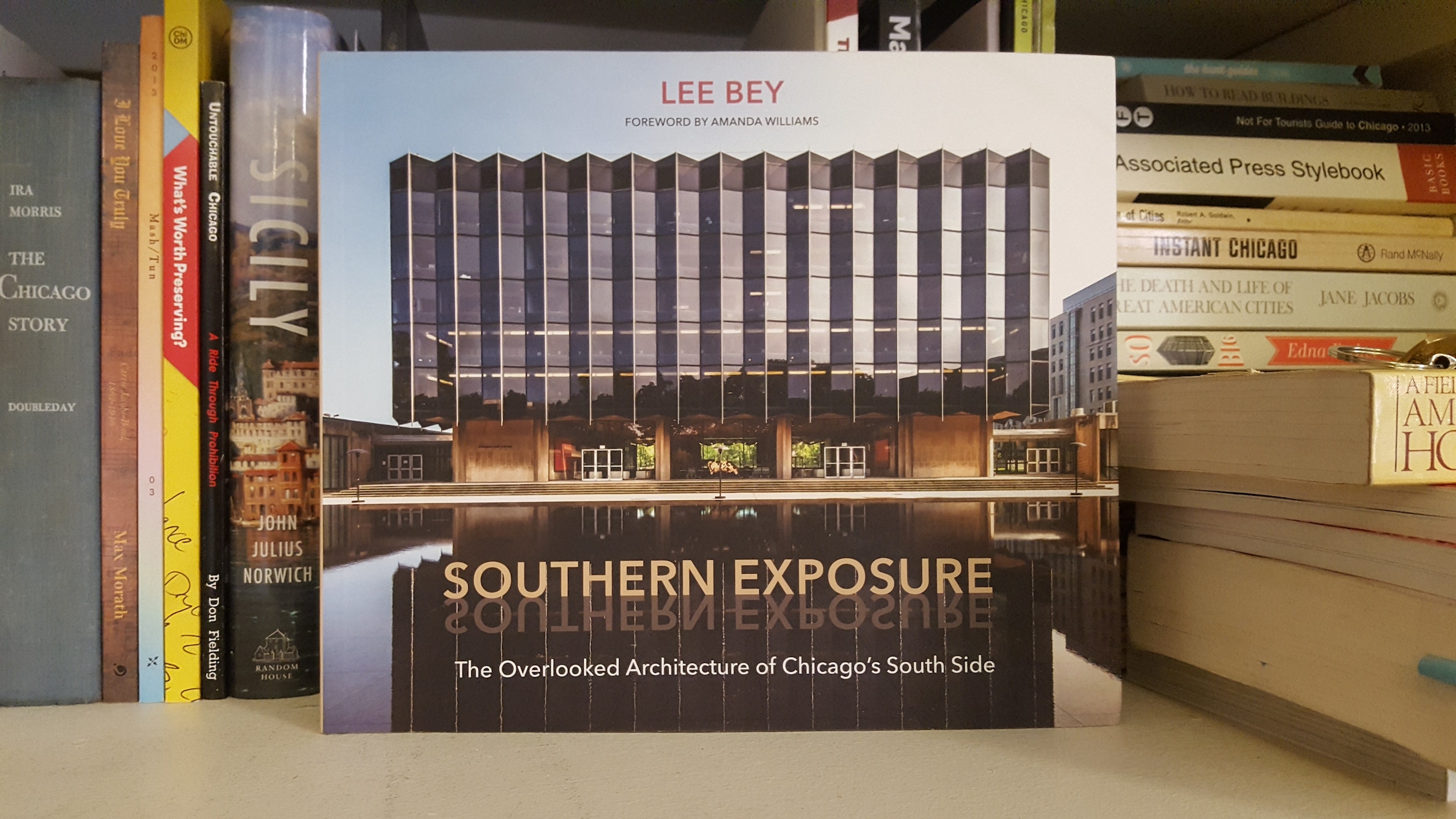The Mother Cabrini Shrine in Lincoln Park is a perfect example of the kind of surprises you run into when wandering Chicago. St. Frances Xavier Cabrini was a Roman Catholic saint who worked in Chicago. Many Chicagoans associate the Cabrini name with the infamous Cabrini-Green public housing project, but that’s a couple miles south of here.
The shrine, originally built in the 1950s, today sits behind a 39-story luxury condominium high-rise and abuts a massive new mansion built for the billionaire Mansueto family. And to be clear, it’s much more than a shrine – it’s an entire chapel structure. The incongruous sight of an old church attached to a new high-rise intrigued me. So I decided to launch an investigation into how this odd situation came to be.
We research stories from Chicago history, architecture and culture like this while developing our live virtual tours, in-person private tours, and custom content for corporate events. You can join us to experience Chicago’s stories in-person or online. We can also create custom tours and original content about this Chicago topic and countless others.
Saint Frances Xavier Cabrini’s Life
Frances Xavier Cabrini was an Italian nun who emigrated to the United States in the late 19th Century. She ministered to the gigantic number of poor Italian immigrants crowding into American cities. The order she founded, the Missionary Sisters of the Sacred Heart of Jesus, helped found schools, hospitals, and orphanages across the world. In Chicago, they catered to the predominantly Italian neighborhoods of the time, like Chicago’s Near West Side.
The Mother Cabrini Shrine in Lincoln Park evolved on the grounds of Columbus Hospital, which she helped found in 1905 and where she passed away in 1917. The Catholic Church canonized her in 1946. She was the first naturalized American citizen to be named a Catholic saint. So many pilgrims were coming to visit the room where she had lived (and died) in the hospital that they impeded the hospital’s operations. So the Archdiocese of Chicago decided to create a distinct shrine on the hospital grounds, which is the building that opened in 1955 and sits behind a high-rise today.
Both the Columbus Hospital and the Shrine closed in 2002. The Cabrini Shrine survived the demolition of the hospital though. The developers of Lincoln Park 2550, a new condo high-rise, agreed to preserve the shrine when they bought the property. Today, the Mother Cabrini Shrine’s entrance and exhibit halls are part of the larger Lincoln Park 2550 structure.
Visiting the Mother Cabrini Shrine
I made a call to the Mother Cabrini Shrine, and it ends up that you can easily arrange for a casual tour. So I stopped by, accessing the Shrine through an entrance in the gigantic new condo tower. It looked like there were units right above the shrine’s offices, in fact. Once inside, Sister Renee showed me the new exhibit hall’s photos and artifacts of the institutions the saint founded here. On display was Cabrini’s little black book, which included many bigwig Catholic bishops and politicians. There’s also a recreation of the room Mother Cabrini passed away in. Sister Renee explained that the furniture was original, including the chair Saint Cabrini was sitting in when she died.
The shrine is still at the heart of the complex. The chapel was to resemble the Romanesque churches that Saint Cabrini would have known in Italy. Vibrant ceiling murals depict the saint’s life. A relic from Saint Frances Xavier Cabrini’s femur bone relic is encased in glass under the altar.
Most Chicago high-rises don’t have a historic holy space like this in their backyards! It’s pretty special so I recommend a visit. The Mother Cabrini Shrine is open six days a week. Like me, you can call for a quick tour or attend the weekly Saturday mass. You can also reach out to us to arrange a custom tour of Chicago neighborhoods which swings by the Mother Cabrini Shrine.
– Alex Bean, Chicago Detours Tour Guide
ABOUT CHICAGO DETOURS
Chicago Detours is a boutique tour company passionate about connecting people to places and each other through the power of storytelling. We bring curious people to explore, learn and interact with Chicago’s history, architecture and culture through in-person private group tours, content production, and virtual tours.
